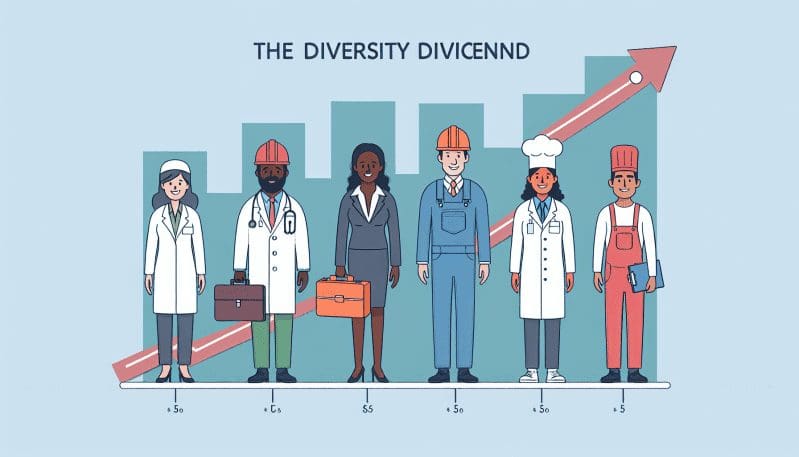The Diversity Dividend: Calculating the Real Value of Inclusion in Tomorrow’s Workforce
- Home
- The Diversity Dividend: Calculating the Real Value of Inclusion in Tomorrow’s Workforce
- Editors Desk
- April 3, 2024
- 0 Comments
As we recognize Diversity Month, it’s time to steer the conversation towards a pivotal aspect of the modern workplace that goes beyond the bounds of traditional metrics: the real value of diversity and inclusion initiatives. The term ‘diversity dividend’ aptly encapsulates the economic gains a company reaps from fostering an inclusive environment, but how do we measure it?
When discussing diversity, the dialogue often remains tethered to moral arguments or complies with legal frameworks designed to promote equal opportunity. While these are unquestionably important, it is imperative to reckon with another truth: diversity and inclusion are not just about doing the right thing; they’re about doing the smart thing.
Consider innovation, the lifeblood of any forward-thinking business. A diverse workforce amalgamates a variety of perspectives, experiences, and problem-solving approaches. This melting pot of ideas isn’t just a nice-to-have; it’s a must-have in a world where competition and consumer demands evolve at breakneck speed. But how do we quantify such dynamic cognitive processes?
Then there’s decision-making. Studies suggest that diverse groups often outperform homogeneous ones in decision accuracy. Yet, the richness of discourse, the avoidance of groupthink, and the broadened worldview- how can these be captured in numbers?
Let’s not forget the less tangible but equally significant aspect of company reputation. In our interconnected world, a reputation for inclusivity can be a beacon that attracts top talent, conscientious consumers, and even investors keen on social responsibility. But can we calculate the influence of corporate ethos on the bottom line?
As experts in human capital analytics, it’s our quest to uncover these intangible assets and translate them into tangible data. The journey begins with a fresh toolbox of methodologies. We need to venture beyond the traditional and embrace the multidimensional. For instance, new analytic frameworks might include:
– Predictive analytics to forecast the impact of diverse hiring on innovation and revenue growth.
– Network analysis to visualize and quantify the strength of inclusive cultures in enhancing collaboration.
– Sentiment analysis applied to employee feedback to gauge the health of diversity initiatives and their influence on morale and retention.
The issue, of course, is complexity. These non-linear impacts, by their nature, defy easy measurement. Yet, this complexity should not deter us but rather inspire us to pioneer more nuanced methods that reflect the multifaceted reality of our workplaces.
As we build on these insights, we align our interests with a demographic that craves depth in the discussion of work, worker, and workplace dynamics. This is a conversation that transcends what forums like the World Economic Forum have touched upon and takes a brave leap into the unmapped territory of the future economic landscape.
By establishing the Diversity Dividend, we are not only making a statement but taking a stand. A stand for an economy that values every facet of human capital. A stand for a world where no worker is left behind. Our commitment during Diversity Month is to bring this vision into sharp focus, ensuring that the spaces we create today are a testament to the diversity we will see in the workforce of tomorrow.


Leave A Comment